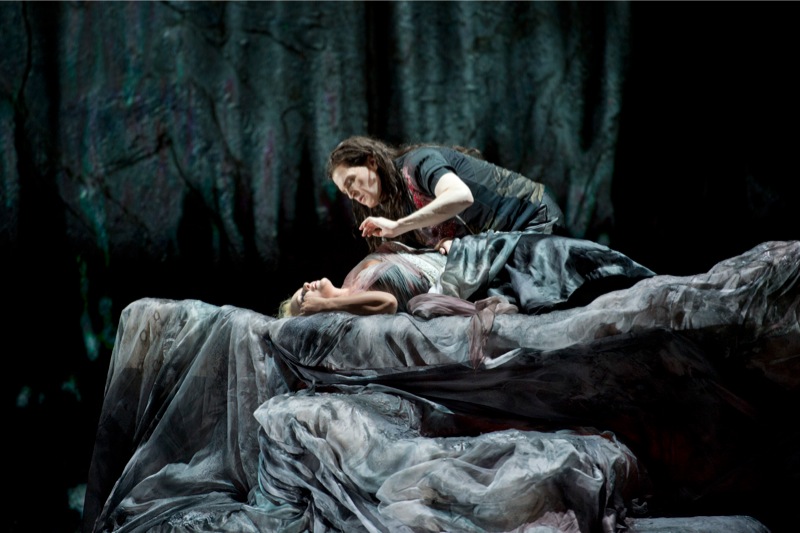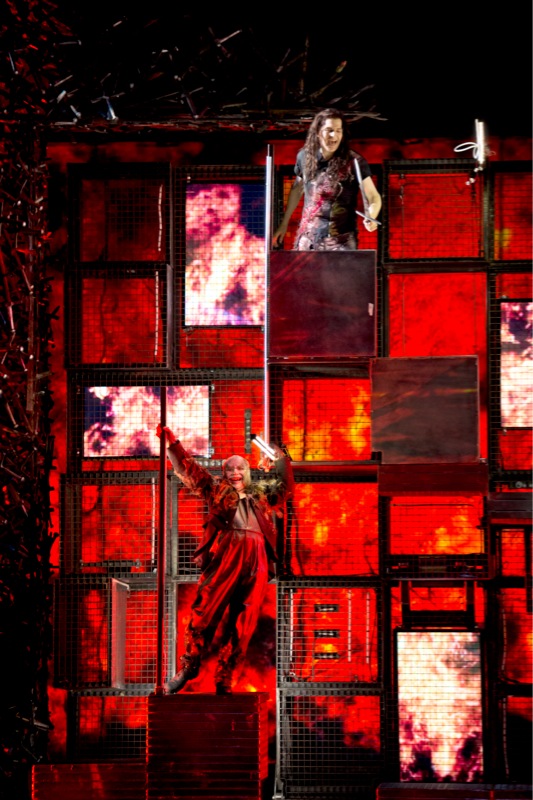Siegfried, Staatsoper Berlin, Schiller Theater, April 2013 (original) (raw)
Posted on 8 April 2013
The first two operas of this cycle experienced slight problems: orchestra lights failed a couple of times during Rheingold, and stage backdrop lighting flashed and failed in Walküre. But Siegfried saw a more serious disruption when the eponymous hero failed to show up for Act I. Why, we were not told, but the role was admirably sung from the wings by Andreas Schager, with an assistant stage manager going through the motions on stage. So vocally effective was Schager that Daniel Barenboim brought him on for a special curtain call at the end of the act, and the audience roared their appreciation.
Awakening, all images © Monika Rittershaus
Canadian tenor Lance Ryan thankfully turned up for Act II, which was just as well since Schager was singing in a concert performance of Zauberflöte with the Berlin Philharmonic under Rattle later the same evening. At the end of Act II, Ryan declined a solo curtain call, and at the end of the opera, after a superb performance in Act III, the restrained applause marked audience disapproval for his early absence. But he was exceptionally good, and I regret not hearing him in all three acts. His final scene with Iréne Theorin as Brünnhilde produced glorious singing, and his Sei mein! followed by her beautifully gentle Oh Siegfried! Dein war ich von je! was a moving moment.
Forging the sword
Of course Daniel Barenboim in the orchestra pit was the magician bringing Wagner’s great moments to fulfilment, and this third episode of the Ring was a musical triumph. Peter Bronder sang and acted strongly as the ill-favoured Mime, and Norwegian bass-baritone Terje Stensvold gave a commanding performance as The Wanderer.
Mikhail Petrenko sang a strong Fafner from behind the stage, but here we find one of the problems in this Guy Cassiers production. The dragon was portrayed by five dancers wafting a vast printed silk sheet, but since the voice came from elsewhere this lacked conviction, and after the dragon’s death they attached themselves to Siegfried, making interminably dull geometric patterns with five swords. The dismemberment of voice and body had already occurred to the Woodbird, with a double performing insipid and unmusical movements on stage while the singing Woodbird (Rinnat Moriah, a perfectly handsome young woman) was off-stage.
Siegfried and dancers
Good lighting and sets, except that the forging of the sword was essentially done by atmospheric lighting and seven flat screen videos, plus a few tap-taps in the upstairs part of the set, as if a saucepan were being mended. Otherwise I liked the intriguing design for Mime’s home, which Wotan navigated with admirable aplomb as it turned from horizontal to vertical. Forest lighting was wonderful, and the meeting of Alberich and the Wanderer in Act II was very effective. If the superfluously irritating dancers had been absent, this act would have been perfect — they were not there in Walküre, and I’m sure most of us hope for the same with Götterdämmerung.
This performance was on April 7, and the final instalment of The Ring takes place on April 10.
Categories
Tags


